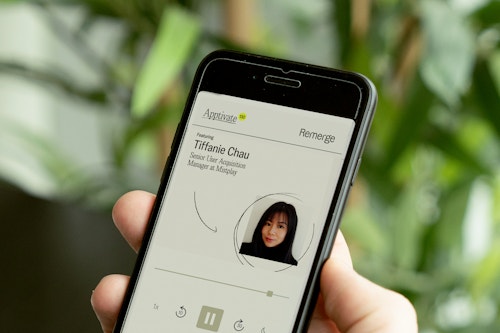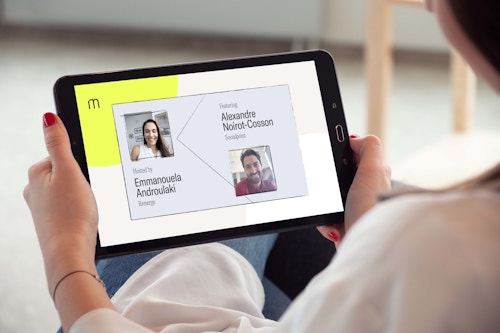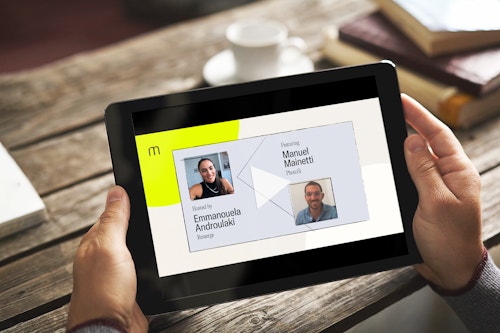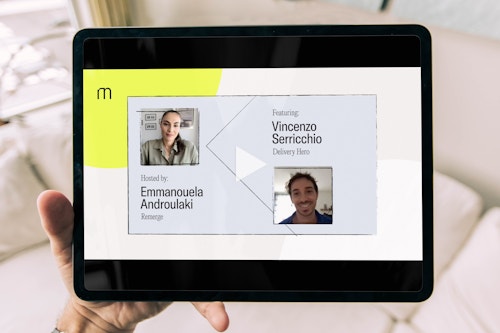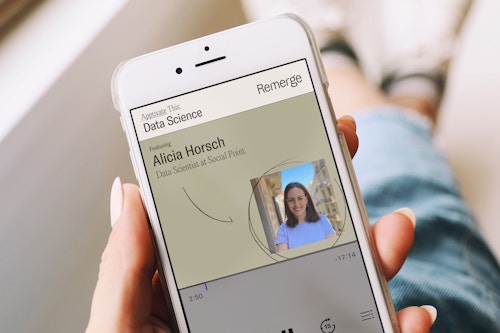On-Demand Delivery: Insights with Delivery Hero
September 11, 2020

Delivery app experts Vincenzo Serricchio (Delivery Hero) and Pedro de Almeida (Remerge) got together on a live online panel at the MGS Global Virtual Conference to talk about the misconceptions, strategies, and tips on how to bring your delivery app to the next level. In the video below, Vincenzo shares his insights on:
- Redefining “acquisition” as a first-time order from a customer
- Winning in a highly competitive landscape
- Applying the high correlation between the time from install to first order and loyalty to your retargeting strategy
- Using retargeting to leverage the first party data, applied to hyper localized and personalised creatives
- Validating your approach with incrementality testing
“Using Retargeting as a User Acquisition Channel for Food and On-Demand Delivery Apps”
Transcript
The following content reflects the discussion points covered on the video.
Introduction
Pedro: Could you give us a quick introduction to Delivery Hero and to yourself?
Vincenzo: Delivery Hero is a delivery hub that is present in multiple regions around the globe. My main goal as the Head of Mobile Delivery Hero is to first acquire new customers to grow the customer base, but to also retain them and have a loyal customer base in the long run. We are moving our company away from the food delivery-only business towards a multiple vertical business - we now deliver groceries, flowers, and many other goods to your doorstep. I’m personally working in the programmatic field to help the company grow in this directly, by acquiring new customers and retaining them in the long run.
The first time order
Pedro: What are the biggest challenges that you face when it comes to driving those first orders and how do you address them?
Vincenzo: For us at Delivery Hero, the main goal and the end goal is to drive the first-time order. This means that a person doesn’t only have to install the app, but also purchase at least once within it. This is when we define the person as a new customer in our database.
Obviously, the food and delivery industry has become even more competitive due to the recent situation we’re facing with COVID-19. The app space has become quite crowded. There is very high competition, with new apps popping up in markets where we are present, so at the moment maintaining or growing our market share is one of the biggest challenges that we have to face. There’s also a challenge for us in terms of acquiring new customers, that we don’t have too much of an overlap between our user acquisition and retargeting campaigns.
Our definition of “retargeting” starts right after the install, so the challenge we’re currently facing is how to make this overlap (with UA) as minimal as possible. This is something that we actually looked into and we saw that the number of reattributed events that are triggered by a retargeting partner (from a UA network) is minimal.
We’re willing to live with and compromise on a small amount of overlap because as we’ve talked about, there is high competition in the markets and retargeting is very important because we don’t want to wait too long to retarget the customer and otherwise lose them forever.
So whenever a customer has just installed our app, we want to make sure that they will convert as soon as possible. We’ve also seen a high correlation between triggering a first-time order event after a certain number of days after the install and the loyalty of these users in the long-run. That means, the sooner the customer makes their first order after installing the app, the more likely it is that they will make the second and the third order. This is something we’ve looked into, which is why we retarget our users straight away, right after they make the install. It’s very important to do so, because the competition is very high and we want to make sure that we don’t lose the customer along the journey after they’ve made the install.
« Retargeting is very important because we don’t want to wait too long to retarget the customer and otherwise lose them forever »
Vincenzo Serricchio, Delivery Hero
On retargeting
Pedro: Those are really great insights, especially knowing that you found a correlation between how soon the first order happens after the install and future loyalty. You mentioned about how you mix the two channels - retargeting and user acquisition campaigns. Could you tell us a bit about what retargeting offers on top of the traditional acquisition campaigns?
Vincenzo: Retargeting is a channel where we can leverage a lot of our first-party data, so this is where the audience targeting comes into place, and where we can deliver highly personalized content. With our feeds, we can deliver very relevant and personalized content for our end customer. We use a certain logic to target and retarget the customers according to what they’ve already seen in the app, such as the last vendor or the best vendor in their area, or if there’s any deals that would be relevant for them to know.
We also run our retargeting campaigns in a hyper-local way, so we target specific customers depending on where they’re located, which kind of restaurants are around them, and how relevant these can be for them based on the cuisines they’ve shown interest in, and so forth. So this is where the benefit of retargeting comes into place, because you can be relevant to them by providing the right creatives wherever they are in the funnel.
Incrementality and the overlap between retargeting and UA
Pedro: You mentioned the overlap between retargeting and user acquisition. Traditionally there’s this idea that retargeting will only take organic conversions. Are you applying any other strategies - which I think is the word of the year -- incrementality? Have you also checked whether you have seen any uplift from retargeting campaigns for those first-time orders?
Vincenzo: The overlap is there, but it’s minimal, so the cannibalization or the stealing, in this sense, is very minimal. However, we also look at this from another angle, which is the incremental value of each campaign.
So like many others, we run incrementality tests throughout the year in different periods and different quarters to prove that the incremental value is there. We also see the incrementality that retargeting has in different time periods because there is seasonality, and the marketing pressure that we place on different paid channels are different. These all play a role in defining the incremental value of the retargeting campaign through the year.
« We also look at this from another angle, which is the incremental value of each campaign. »
Vincenzo Serricchio, Delivery Hero
Pedro: For those who would be interested in starting or adding retargeting to their campaigns, how would you recommend to split the investment not only in terms of budget but also effort in relation to the retargeting partner?
Vincenzo: The strategies we apply towards retargeting are not the same across all the countries we operate in, because the maturity and market penetration are different. Our goal at Delivery Hero is to be the no.1 delivery app in every market where we are, and in most of the countries we have a huge market share if we aren’t the only partner in the space. In this sense, the split between retargeting and UA efforts is different between markets.
In a very saturated market like with our long-time presence in the Middle East with Talabat, we try to convert customers more via retargeting campaigns as we already have a large install pool to fish from. With insights from incrementality tests, we also see where to push more according to the incremental value driven from each retargeting campaign.
Pedro: How do you incorporate incrementality measurement results into the budget allocation decision between installs and retargeting first-order acquisition?
Vincenzo: We have an internal attribution model which we calibrate via incrementality tests. When we assign too much or too little value to certain channels or campaigns, we can see whether the efforts are undervalued or not in line with the CPA in the end. We factor these into account and tweak the attribution model accordingly, based on our incrementality tests. Another factor that plays a role, for example, is whether iOS campaigns are more incremental than android - we then tweak the budget allocation according to these insights.
Advice
Pedro: Any other last tips or advice?
Vincenzo: You need to test and see which kind of retargeting windows are working for you and where you should step in with your retargeting campaigns. It’s a matter of testing and trying to find the area where you can add value via the retargeting campaigns. Retargeting campaigns bring a lot of value but you need to find the right spot, the sweet spot for every single business.
Further reading
If you’re interested in learning more about food and on-demand delivery apps, read or listen more:
Get the latest app marketing insights
Join our newsletter
